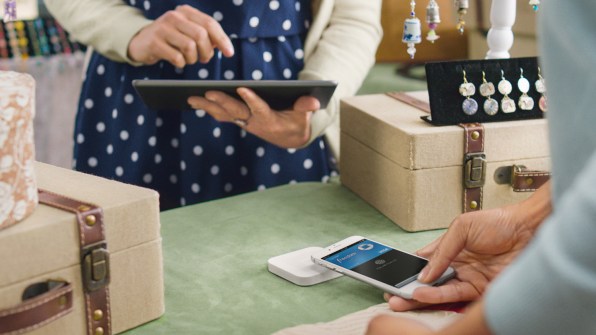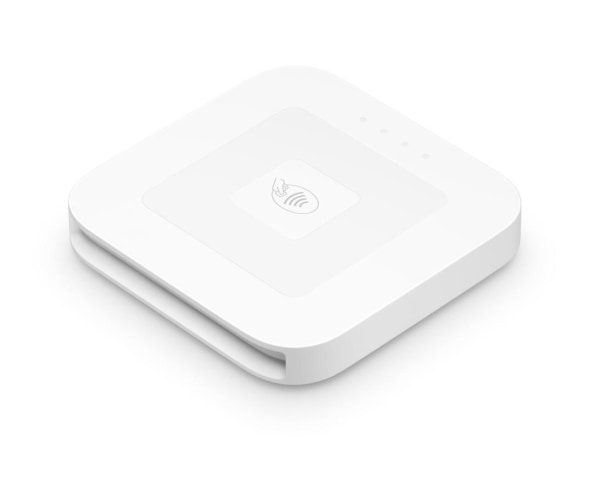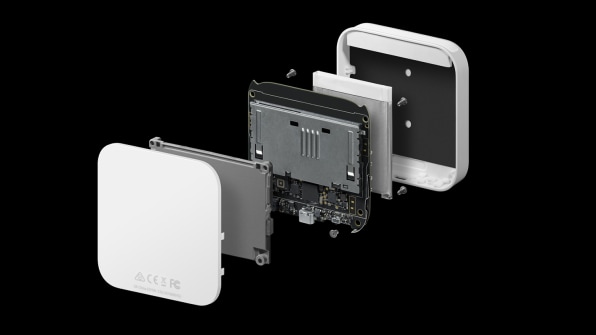5 Square Meter Bathroom Design
It's rare for any startup to have as symbiotic a relationship with a single hardware device as Square has had with its credit-card reader. The original version, which debuted in 2009, democratized credit-card acceptance by building a magnetic-stripe reader into a tiny square gizmo that plugged into a smartphone's headphone jack. Combined with Square's app and payment-processing service, which charged a flat rate per transaction, the reader let even the smallest of small businesses easily take plastic for the first time.
The company released a version that was both thinner and more robust in 2013. The next year, it introduced a dual-slot redesign that let you both swipe old-school cards and dip the new, more fraud-resistant ones that are equipped with embedded security chips. And then it showed off yet another new reader at Apple's WWDC keynote last June, in an exceedingly rare instance of a non-Apple hardware product being announced at an Apple event.

Unlike previous evolutions of the reader, this one was a striking departure–a much larger, 2.6″ square slab of a gadget which connected to phones via Bluetooth, not the headphone jack, allowing customers to interact with it themselves rather than handing their cards to a merchant. The new standalone design was prompted in part by yet another new way to pay for stuff: mobile payment services such as Apple Pay and Google's Android Pay. Rather than involving swiping or dipping a card, they let you tap your device to pay, using NFC, a technology which has been around for years and is embedded in some cards, but which didn't matter much until Apple Pay and its competitors arrived.
"The idea that you'd be tapping my phone with your phone just didn't ring true to us," says Jesse Dorogusker, Square's hardware lead since 2011 and, in a previous life, Apple's engineering honcho for iPhone, iPad, and iPod accessories. "The NFC interaction is more about, you control your phone and watch. You're not going to hand your phone to me. There has to be a way for my space and your space to be mediated." In other words, designing a new reader wasn't just about reacting to a technological shift; there were social implications as well.
After unveiling the reader last June, Square gradually rolled it out, at first in beta-test mode. The company began taking preorders in November, and is now fully ramped up and selling readers for immediate shipment.
Keeping Pace With Payments
Paying for stuff by swiping a card with a magnetic stripe is hardly dead, but it's officially a legacy technology. Along with the rest of the payments industry, Square's road map was heavily influenced by a mandate from the major credit companies designed to encourage the use of cards with embedded chips based on EMV technology, which–especially when coupled with a PIN–greatly reduce the risk of fraud. As of last October 1, card issuers shifted liability for fraudulent transactions performed with a magstripe swipe from the card provider to the merchant, giving retailers every reason to install the EMV-capable payment terminals.
"A billion credit cards that were all mag stripe cards are slowly and then quickly being reissued to customers to include this new technology at reasonable expense to the banks in the name of a more secure solution," Dorogusker says. "Some people have them. My wallet is finally 100% flipped over."

Even with cards in wallets, the transition has been messy. Last month, a research firm reported that almost two-thirds of U.S. retailers still aren't equipped for EMV transactions. Another study said that 80% of the retailers who do have EMV-capable readers aren't using them for EMV transactions. Among both shoppers and sellers, there's a fair amount of confusion as swiping gives way to dipping.
Meanwhile, NFC-based transactions using smartphones and smartwatches–a trend which first mattered with the introduction of Apple Pay in the fall of 2014–introduce some usability issues of their own. Consumers are still figuring out how to swiftly tap their devices to the correct spot on payment terminals, sometimes while simultaneously confirming their identity via fingerprint scanner as part of the gesture. "There really is a lot that's new in this ritual," Dorogusker says.
Square wouldn't be Square if it didn't set out to shield people from the ugly complexity of financial transactions. So for all that's new about the new Square reader, it's far more reminiscent of its dinkier predecessor than it is of the garden-variety payment terminals which you might run into at a chain supermarket or fast-food joint–the big, bulbous sort with a display, keypad, tethered stylus, dedicated surface for tapping an NFC-equipped device, and other gewgaws.

The new Square reader remains compact, thin, shiny, white, and sparingly adorned with symbols and lights. Through sheer minimalistic simplicity, it aims to make it as obvious as possible for a customer to know how to pay. If you've got a chip-enabled card, you dip it into the slot on the front. If you're paying via Apple Pay or another NFC-powered service, you tap the top of the reader. (There's no mag-stripe slot: Buy the new reader, and you also get an old-school, headphone-jack reader for such transactions.)
Oh, and for all that's changed, the shape of the new reader evokes Square's previous models, its name, and its logo. "Obviously we stuck with the square," Dorogusker says. "It's a nice design constraint when it's your company name. The job of our industrial design from the beginning has been to communicate the utility, to communicate to both sides of the counter what's supposed to happen. Our objective is that people will recognize this as, 'Oh, I can pay with my phone right here. This is how one does that.'"
Do-It-Yourself Design
The natural outcome of Square's decision that the new reader must continue to emphasize sleekness and simplicity was that it ended up engineering the device itself rather than merely assembling off-the-shelf components. "This is technology that was invented awhile ago, and it wasn't built for mobile," Dorogusker says of the functionality which the company needed to incorporate. "There's a lot of baggage in designing something that is truly mobile and truly small. Which usually means digging in and going back and doing it from scratch."

As with a modern smartphone, everything is packed in like a dense, three-dimensional jigsaw puzzle, and antenna reception and battery life–the reader can perform hundreds of transactions before requiring recharging–are key concerns. "The NFC antenna is shockingly small," says Dorogusker. "It goes right up against the battery, which antennas don't always love."
Square also took on the responsibility of engineering its own software. "There are dozens of places where you can buy EMV software stacks, but we don't want to do any of that, because we wanted to have end-to-end control of the system," Dorogusker says. By writing its own code, Square was able to manage power consumption in a way that isn't an issue with conventional payment terminals that don't run off batteries. It was also able to offload some computation tasks into its iOS and Android apps, reducing the need for round-trip communication between reader and mobile device and thereby conserving battery juice.
Taking on so much responsibility allows Square to perform both chip-card and NFC transactions as quickly as possible. "We're haggling over milliseconds, constantly," says Dorogusker, who's been known to time the chip-card payment process at Target checkouts.
Doing everything right and hitting a reasonable price point, he adds, was a challenge in itself. Square is selling the new reader for $49–cheap by payment-terminal standards, but higher than past incarnations of the reader such as the current version of the mag-stripe version, which it now gives away. (During the new reader's pre-order period, it did offer it to some existing Square merchants for free, and tried a deal which gave purchasers $49 in processing credit, reducing the effective price to $0.)
At the Counter
Among the beta testers of the new Square reader was Honey Butter Chicken, a Chicago restaurant which, as cofounder Josh Kulp explains it, "tries to do the kind of food that people want to eat, but using really wonderful ingredients." The three-year-old eatery has used Square since its earliest days, when it was a series of pop-up events without a permanent location. Today, it uses multiple iPads running Square's Square Register app as its point-of-sale system.
"I contacted Square almost immediately after Apple announced Apple Pay, and they assured me something was coming," Kulp says. That something was the new reader. When it arrived, "we plugged it in, and it worked instantaneously. There was nothing to figure out."
The restaurant still finds it helpful to post signage at the counter reminding its customers about the new ways to pay, but Kulp says that his past experience with Square reassured him that fried-chicken lovers would soon adjust. "Even three years ago, we had to explain to people that they had to sign with their finger. That was a quick transition. Now everyone from 10 to 90 knows. With the chip-card reader, for a couple of weeks it was weird. Now it's just what you do."
5 Square Meter Bathroom Design
Source: https://www.fastcompany.com/3057852/the-design-challenge-behind-squares-new-reader

0 komentar:
Posting Komentar